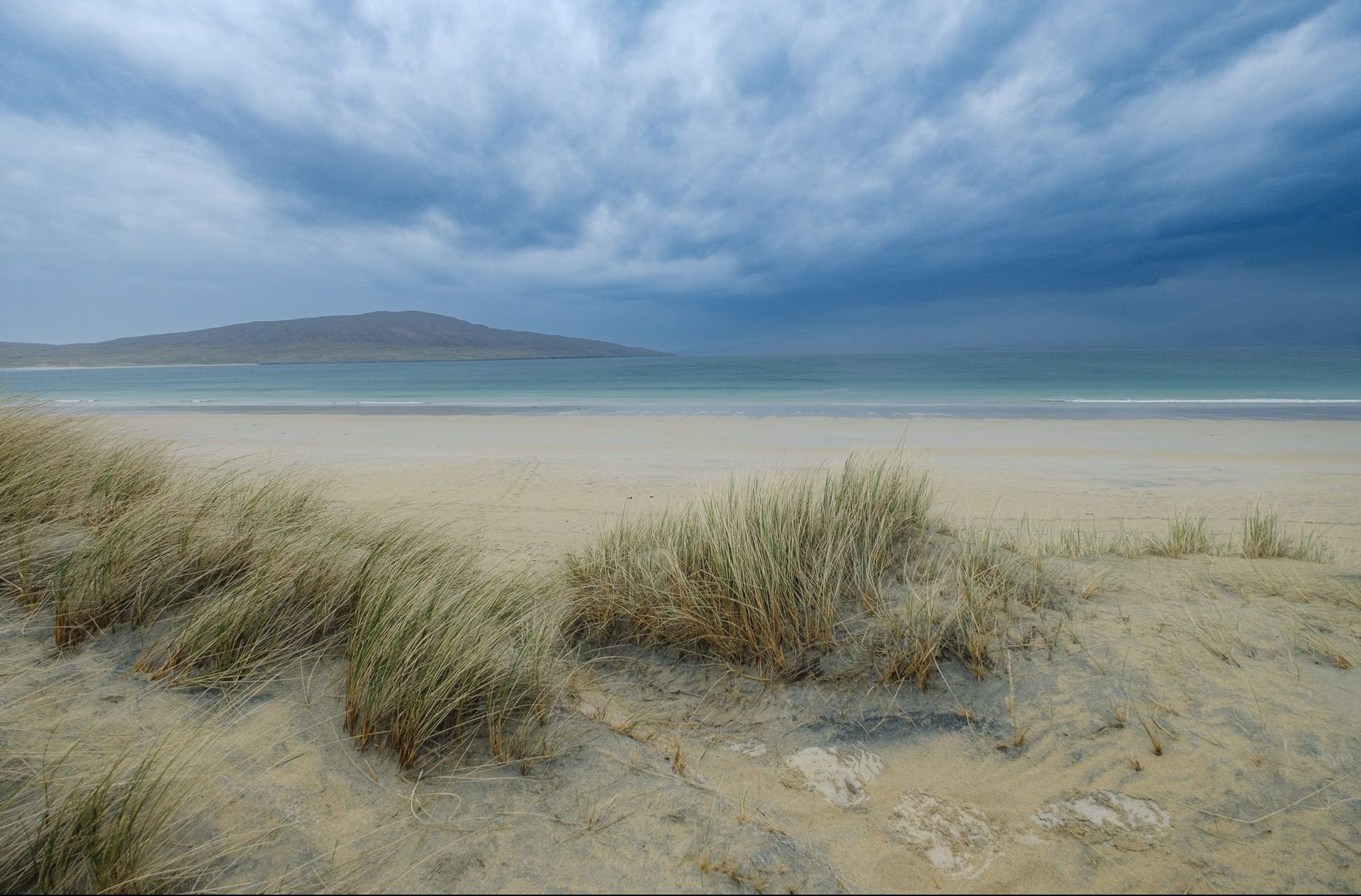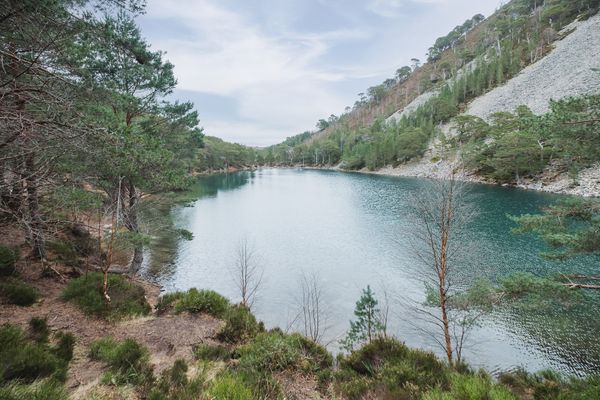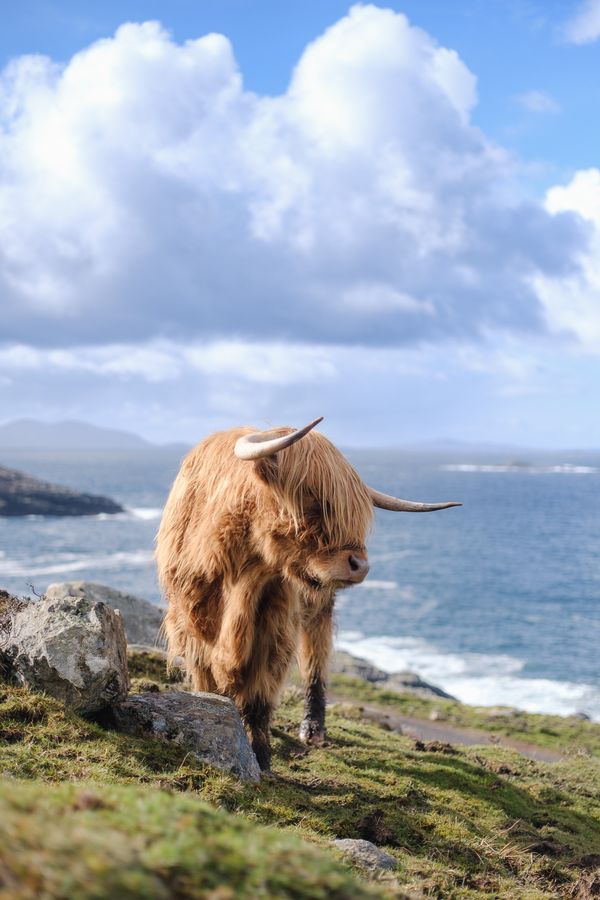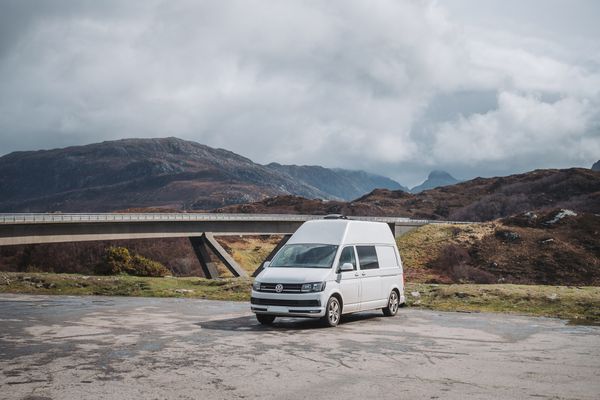Back in April, we spent 4 weeks road tripping around the Scottish Highlands in our campervan to complete the famous North Coast 500 driving route. While we loved stopping off at all the must-see sights along the way, we decided to detour from the route to spend five days exploring Scotland’s largest island – Lewis and Harris. After being on the tourist track for so long, arriving on this peaceful island was a bit of a shock! As the only way to access the island is by ferry or air, heavy tourism hasn’t really hit here yet, so we spent our days strolling empty beaches, spotting local wildlife and visiting historic sights – which we had all to ourselves! Here’s what makes a trip to Lewis and Harris so special:
The beaches
This was the main reason we added the island to our itinerary when we were planning our Scotland trip! Within an hour of arriving on Lewis and Harris we were walking along the brilliant white sands of Luskentyre beach, admiring the unbelievably turquoise waters and mountain backdrop. You’d be forgiven for thinking it was a beach in the Maldives! Luskentyre is one of the largest beaches on the island, and consistently ranks highly in lists of the best beaches to visit in the world. We couldn’t believe our luck that we had the entire beach to ourselves – though this would come to be the case for almost every beach we visited during our time on the island. We recommend checking out Garry, Bosta, Uig and Huisinis – the scenery and park up area on Huisinis is especially fantastic! More on that below…
The tranquility
When you’ve been on the tourist trail on mainland Scotland for a couple of weeks, the atmosphere on Lewis and Harris is noticeably different. Gone are the busy campsites, gone are the hundreds of tourists taking the same picture right in front of you. We can only assume that the additional cost of having to arrive on the island by ferry or airplane is what puts people off coming here, and our visit to the island was all the more peaceful for it. We drove for miles without passing another car or camper, and had only one or two other vans beside us at all of our park ups! Unlike the Isle of Skye and the mainland, even the most popular spots were quiet and we didn’t have to queue (like we did at Smoo cave) or wait for a parking space (like we did at Fairy Glen Falls).
The history
There’s so much to discover on Lewis and Harris – even the rock that makes up parts of the island is the oldest the of rock in Britain, having been created around three thousand million years ago! In more recent years, the island is famous for its Harris tweed – a fabric that is made from pure wool and is handwoven, dyed and spun by islanders in their homes. We were lucky enough to see a live demonstration of this fabric being created on one of the only surviving looms at Gearrannan Blackhouse village. This cluster of picturesque stone houses with thatched roofs were home to a small crofting community in the 1800s. One of the houses has been preserved as a museum, where we learnt so much about life in the blackhouses! It’s fascinating to look around inside and walk through the short ‘street’ here. We paid £4.90 each to visit the village which is well worth it! Head to the Gearrannan Blackhouses website for up-to-date information.
Another historical highlight is the Callanish Standing Stones. These towering stone circles were erected around 5,000 years ago, meaning they predate Stonehenge! Their purpose is unknown but the circles are thought to be ritual sites. There are three sets of stones, all within walking distance of another. It gave us goosebumps walking among them and imagining the rituals that took place here thousands of years ago! It’s free to park at the visitor centre, though spaces are limited. Head to the Callanish standing stones website for up-to-date information.
Lewis and Harris is bursting with ancient history, but sometimes you have to know where to look to find the smaller sights. The Iron Age house at Bosta beach is tucked away from view, having been excavated and then re-covered in order to preserve its exterior. We also enjoyed visiting the lighthouse at the Butt of Lewis, even though little is known about the workings of the lighthouse itself. We were drawn to visit the Butt of Lewis as it’s the most northerly point on the island, and famously one of the windiest locations in the United Kingdom! Even if you’re not the biggest history enthusiast, the pockets of tradition and stunning scenery on Lewis and Harris is enough to inspire any visitor.
Enjoying this post? Help support our blog by leaving a tip from as little as £1!
The landscape
Which brings us to the incredible ‘lunar’ landscape of the island, so named as only around 1% of the land is cultivated and 96% is peaty moorland or ice-scoured rock. This makes for otherworldly scenery as you travel around Lewis and Harris, especially when you can drive for miles without seeing another person – it’s truly like being on the surface of the moon at times! In one direction you’ll have a rocky mountain view and in another, grassy coastline with towering waves rolling in from as far as the eye can see. One viewpoint from which to truly appreciate this is at Mangersta Sea Stacks – a fantastic photography stop on the West coast! The sea stacks jut out of the water in points as a result of huge waves crashing against them over many years, forming their spiky shapes. The nearby Mangersta beach is also worth a visit for more spectacular views along this wild coastline.

The name ‘Lewis and Harris’ might lead you to believe that the island is split in two, though it is actually one big island with a collective population of just 21,000 people. However, there are ten times more people living in Lewis than Harris – which is understandable when you see the geography of both areas! There aren’t many buildings littering the landscape on the island, though there are small pockets of villages, and we’d recommend driving along the famous Golden Road on the North East coast of Harris to get a glimpse into what island life is like (and daydream about living in one of these remote houses with a sea view!).
The wildlife
Another reason to drive the Golden Road – we spotted SO many seals basking on the rocks at Finsbay! Unfortunately there’s not a great place to stop to admire them, so we paused on the deserted road for a couple of minutes before moving on. We kept our eyes peeled every day for dolphins too but didn’t manage to see them during our time on the island, though we’ve heard the best place to spot them is Tiumpun Head on the West coast.
For bird lovers (like Suze) there are a variety of sea birds to spot along the coast, such as Oystercatchers, Gannets, Sea Eagles and Puffins! On one particularly drizzly day we hiked a 5km trail to the North Harris Eagle Observatory in the hopes of spotting the resident Golden Eagles, but to no avail. Still, the picturesque hike and sheltered observatory are worth a visit!



For avid animal lovers, just a short walk from the Callanish standing stones visitor centre you’ll find Callanish Alpacas! This family-run smallholding is home to dozens of rescue animals, from alpacas, chickens and ducks to pigs, peacocks and rare four-horned Hebridean sheep! The smallholding offer drop-in visits and an informal tour which we were lucky enough to catch – the family’s passion for animal care really shines through! There is no charge to visit but donations are welcome, and there is a very cute gift shop full of animal-themed gifts, with all proceeds going directly to care for the animals. Visit the Callanish Alpacas website for more information.
If you’re lucky you may spot some wild Red deer as you drive across the island, and you’ll definitely encounter more than a few sheep. If you’re hoping to find a certain famous Scottish animal, then head to Huisinis Gateway to see a herd of Highland Cows! These floppy-haired coos are simply gorgeous to see with your own eyes, and they were so calm around humans! We didn’t try to approach them or pet them (obviously!) but they were more than happy to pose for our photos as we walked amongst them on the hillside.
The park up spots
We were amazed at how welcoming Lewis and Harris is for campers! There are many park up spots available for campers in exchange for a small donation, and we were able to park up by a different beach every night with beautiful views out to sea. At Luskentyre beach, there are six parking spots scattered along the road that operate on a first come, first served basis, in return for a £5 donation. While the only facility here was a large bin to throw out any rubbish, we felt it was an incredibly good deal as we watched sheep grazing from one window, and the tide rolling in from the other!
Our favourite park up was at Huisinis Gateway, where we found the Highland Coos, where we were able to park overnight for £12. There is a building with toilets, showers, vending machines and indoor picnic benches beside giant windows to enjoy the views over Huisinis beach! In the parking area there are bins for rubbish and recycling, as well as a freshwater tap and chemical disposal. Every park up we stayed at was peaceful, clean and had the most spectacular views – it was fantastic to park in wild nature but have the peace of mind knowing we were allowed to stay there!
Even our worst night’s sleep at Bosta beach, due to high winds and heavy rain, was preceded by the most breathtaking sunset in the evening as we walked along the sands before retreating to our cosy campervan!
Things to know about visiting Lewis and Harris:
A few general points to help you plan your trip!
- The island is only accessible by ferry or airplane. We believe this is what deters tourists from visiting the island, as it is an additional cost, but it’s one that is well worth it!! For the two of us in our campervan, the ferry cost £152.50 for return tickets. The journey itself takes 2 and a half hours from Ullapool on the mainland to Stornoway in Lewis, and it’s also possible to catch the ferry from Uig to Tarbert in Harris.
- You’ll need 5-7 days to fully explore Lewis and Harris. We spent 5 days on the island, cramming as much into the days as we could! If you’d like to see all the sights on the island, but maybe at a slower pace or with some rest days in between, 7 days will be the perfect amount of time. Even though Lewis and Harris is the largest of the Scottish islands, you can drive from one end to the other in 2 hours – even with all the winding roads!
- April is the perfect time to visit! It’s a given that the island will be wild and windy no matter the time of year, but in April the days are getting longer and you’ll be able to enjoy some seriously surreal sunsets. Some attractions, such as the Gearrannan Blackhouses, only open to the public at the end of March so it’s worth planning ahead to avoid finding them closed when you arrive!
- Stock up at the supermarkets in Stornoway. One reason we’d recommend catching the ferry to Stornaway over Tarbert is simply the supermarkets, especially if you’re in a campervan! At Stornoway you’ll find a decent-sized Co-op and Tesco, as well as a SPAR. We did all our shopping for our 5 day trip when we arrived at the port as food shops are sparse across the island.
- Respect the locals! This should go without saying, but the only reason there are so many fantastic park up spots for campers on Lewis and Harris is because everyone is so respectful of them. We made sure to donate the suggested amount, stayed only one night at each spot, and left no trace – including taking all our rubbish with us or disposing of it correctly at the points provided. What makes these places so special is that there is a mutual respect between the locals and tourists, so the island can be enjoyed by others in this way for years to come.
If you found this post helpful, please support our blog by donating as little as £1 to our running costs! Thank-you!

We are Chris+Suze
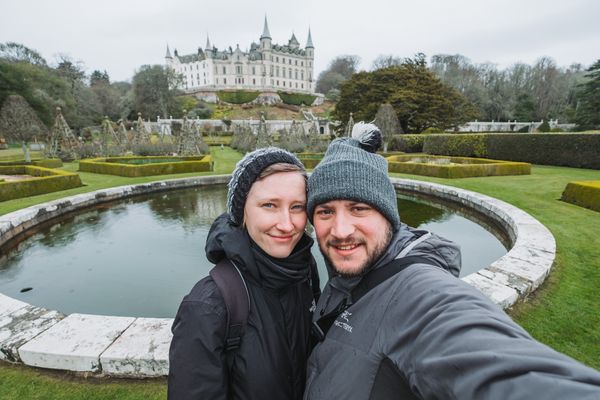
Thank you for reading!
We hope you’ve enjoyed this post! For more posts about great places to visit, head to our blog or follow us on Instagram and Facebook for photos and videos from our travels! Let us know in the comments – have you visited Lewis and Harris? Or has our post inspired you to plan your trip!
